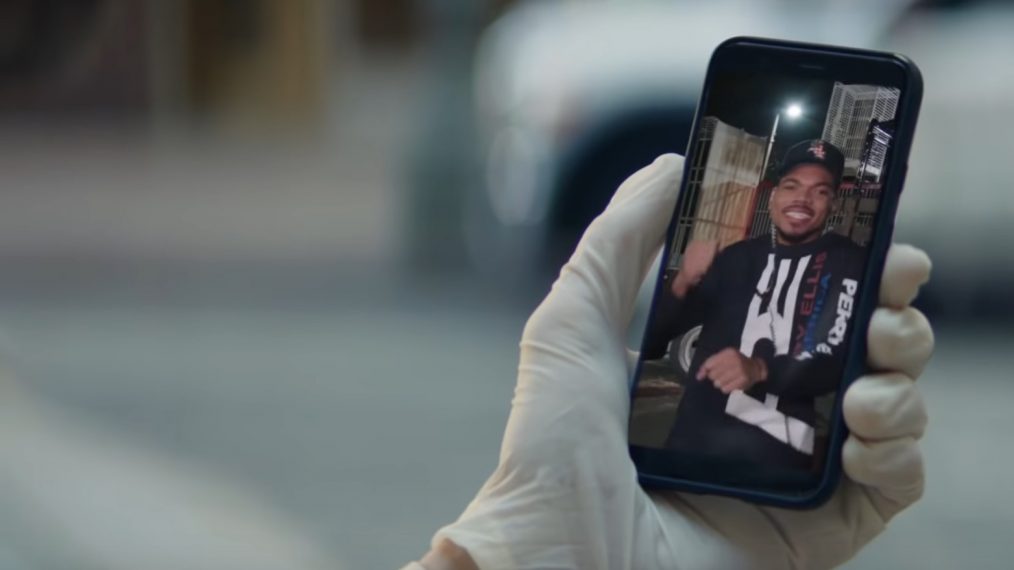Does Quibi Spell the End of Cinematic TV Viewing?

Not so long ago, Game of Thrones fans stormed social media to complain that they couldn’t see the action of Battle of Winterfell—the HBO hit’s most elaborate and hyped battle sequence—through the dark, muddled image on their TV sets.
Two days later, the cinematographer of the episode defended his work. “A lot of the problem is that a lot of people don’t know how to tune their TVs properly,” Fabien Wagner told Wired UK. “A lot of people also, unfortunately, watch it on small iPads, which in no way can do justice to a show like that anyway … Game of Thrones is a cinematic show and therefore you have to watch it like you’re at a cinema: in a darkened room. If you watch a night scene in a brightly-lit room, then that won’t help you see the image properly.”
That kind of cinematic TV viewing experience is a romantic ideal. It’s also an endangered species, especially with the upcoming launch of Quibi, a short-form streaming platform designed for mobile devices — and mobile devices only.
Quibi introduced itself to the world with a Super Bowl ad on February 2, touting its “quick bites, big stories” formula and its slate of programming with episodes “10 minutes or less.” The platform’s founder, former Disney and DreamWorks chief Jeffrey Katzenberg, and its CEO, ex-Hewlett Packard chief Meg Whitman, have already amassed a huge rosters of stars for Quibi, including Jennifer Lopez, Chance the Rapper, Chrissy Teigen, Idris Elba, Zac Efron, Tyra Banks, Naomi Watts, Steven Spielberg, Laura Dern, and even Game of Thrones alum Sophie Turner.
And make no mistake: Quibi will not be supported on TV sets or even computer screens. “Nobody has made [premium] content that was native to, and only for, the phone,” Katzenberg previously asserted, per Vulture. “We want to do one thing which no one else is doing and see if we can do it really great.”
Mobile technology has encroached on television viewing for years now, and for a while, TV networks did everything they could do to keep viewers’ eyes from drifting toward their “second screens” before those same networks capitulated to the trend and encouraged fans to live-tweet episodes. (#TGIT!) These days, mobile is winning the battle: Research firm eMarketer reported in June that the amount of time Americans spend on their mobile devices has finally surpassed the amount of time they spend watching television. With that shift in mind, Quibi seems inevitable. After all, if you can’t beat mobile, join mobile.
Indeed, Quibi seems like a shrewd business move in this age of news digests and social media stories and endless scrolls, all markers of our terrible Internet Age attention spans. Mobile-first video and technology have only gotten more popular in recent years. People have gone from yelling at cell phone users for not shooting videos in landscape mode to designing television sets that rotate 90 degrees to show portrait-mode Instagram and TikTok videos.
Meanwhile, in a different galaxy of the entertainment universe, filmmakers have long railed against watching movies on smartphones. “There’s something still for me actually being in a movie theater,” Spike Lee said in 2015. “I know it’s not a popular view, but as a filmmaker—we kill ourselves with editing. With lighting. With sound. … It’s heartbreaking.”
Martin Scorsese ranted about the same issue last year. “I would suggest, if you ever want to see one of my pictures, or most films—please, please don’t look at it on a phone, please.”
As the lines between cinema and television blur, these directors’ critiques can be mapped onto the prospect of watching TV on phones. Sure, it’s a good way to pass the time in a coffee shop line or on a subway commute—or while waiting in the getaway van during a bank heist, as Quibi’s Super Bowl ad suggests—but the creative forces behind shows as cinematic as Game of Thrones, The Crown, and Stranger Things would be justified if they resent mobile TV viewing. If they make TV shows that would look just as good on a 60-foot screen as they do on a 60-inch screen, wouldn’t something be lost in translation to a 6-inch screen? The finely tuned cinematography, the elaborate production design, the detailed costumes—how many of these details would be lost on a screen small enough to fit in one’s pocket?
Interestingly, the Quibi brass is spending a good chunk of change on each episode—“$6 million an hour is the top end of what we are investing in content,” Katzenberg previously revealed, per Vulture—so you’d think they’d want people to stream Quibi on screens big enough to show off that production value. Unless, you know, they’re banking on foldable smartphones taking off.
Of course, we’re not equating Quibi to the Night King. Quibi might end up coexisting with and even supplementing traditional television much as YouTube has. But with the number of bold-faced names and behind-the-scenes talents signing on to create Quibi content, and with the ever-increasing demand for bite-sized content that can be consumed anywhere and anytime, it’s hard not to imagine that traditional TV will suffer.
From TV Guide Magazine
How 'Countdown' Recruited Jensen Ackles to Go Full 'Die Hard'
Countdown boss Derek Haas talks creating the character around Ackles, and the cast teases the “Avengers”-like team of the crime thriller. Read the story now on TV Insider.











